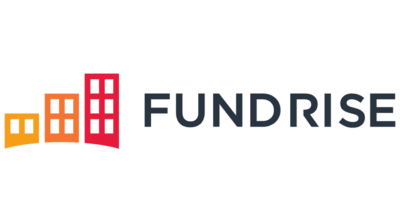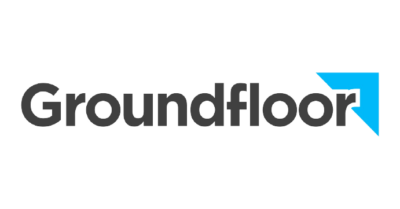If you’re thinking about diversifying your portfolio, real estate is a great way to build long-term wealth or even generate cash flow.
Today, we’re taking a closer look at two of the most popular reale state investment platforms so you can decide if either is right for you: Groundfloor vs. Fundrise. We’re going to look at pros and cons, how they work, minimum investment, and more.
Table of Contents
About Groundfloor
Groundfloor
Groundfloor funds loans for real estate investments. They provide loans for residential single-family and multi-family properties. The loans are typically short-term, with investors using the funds to buy the property and sell them for a profit. If the investor keeps the property, they usually refinance the Groundfloor debt right away.
Want an easy way to get in on the real estate investing action?
You don’t need to be wealthy to diversify your assets with Groundfloor.
How to invest in real estate with Groundfloor
Something you should know about Groundfloor is that they offer loans on properties that banks typically won’t finance. The homes are usually in disrepair and can’t secure bank financing.
Groundfloor offers hard money or loans based on the property’s potential versus the borrower’s credentials. The loans have interest rates higher than a typical bank loan with much shorter terms.
Groundfloor ranks the loans based on their riskiness. A loans are the least risky, and G is the riskiest. Groundfloor looks at the amount the borrower invests himself, the investor’s experience, and how active the investor is in the project (is this a part-time thing, or their full-time income?).
You can put all your money in one loan (not recommended) or diversify across several loans. Ideally, you should choose risky and non-risky loans to earn a higher rate of return yet have the reassurance of non-risky loans should a risky borrower default.
Groundfloor Pros & Cons
Pros
- Invest with as little as $10
- Earn an average return of about 10%
- No fees to invest
- The real estate is collateral
- You can diversify across as many loans as you want in $10 increments
- You don’t need to be an accredited investor
Cons
- Borrowers can and do default on their loans
- Returns aren’t guaranteed
- No secondary market for reselling your investment
- You don’t have control or even a say in the projects
How does Groundfloor make money?
It seems like Groundfloor wouldn’t make any money since they don’t charge investors anything to invest. But, they charge borrowers an origination fee. They also charge borrower’s closing costs.
The origination fee alone is 2% to 4% of the loan amount, and closing costs add up too. Groundfloor earns the fees from the borrower, and investors earn the interest the borrowers pay on the loans.
What happens if a borrower defaults?
Of course, everyone wants to know what happens to their investment if the borrower defaults. Since there is collateral on the loan, it leaves you in a good position.
First, Groundfloor tries to rectify the default by collecting payments from the borrower. They increase the interest rate on the loan until the borrower gets current. If the borrower can’t get current, Groundfloor liquidates the property and distributes the proceeds to the investors based on their investment.
There’s a risk of a total loss like any investment, but it’s lower with Groundfloor investments than most other platforms.
How to sign up for Groundfloor?
It’s easy to sign up for Groundfloor, especially since you only need $10 to start.
You’ll need to link your bank account after providing your personal information. Once you’re approved, you can choose your loans and start investing. Groundfloor makes it easy to see your options and sort them by the level of risk.
About Fundrise
Fundrise
Comparing Groundfloor vs. Fundrise is like comparing investing in debt vs equity. Groundfloor offers investments in real estate professional’s debt to finance residential properties. Fundrise offers investments in commercial real estate investments. Investors (you) own a portion of the properties you invest in, but Fundrise offers the investments as eREITs.
An eREIT is a private Real Estate Investment Trust. That means you can’t buy and sell them on the regular market like you can a traditional REIT. In other words, your investments with Fundrise are illiquid, aka long-term.
The tradeoff, though, can be higher returns in the right circumstance.
Start investing in real estate with $10
Take advantage of Fundrise real estate investing for diversification, simplicity, and low cost.
How Does Fundrise Work?
Fundrise has a vested interest in the properties it accepts. They acquire properties for less than they believe they can be worth and use their expertise to increase the value over time.
They use a conservative approach that’s meant to handle any economic distress that occurs throughout the years. They do most of the work in-house to keep the costs down. They let you choose from various conservative and aggressive investment strategies with approximately 12 portfolios to choose from.
Fundrise continually adds to the real estate portfolio you’re invested in without requiring more money from you. It’s the benefit of investing in Fundrise versus financing a single real estate investment yourself.
Any given portfolio may invest in commercial properties, multi-family units, apartment buildings, or office buildings.
You can invest in Fundrise with as little as $10, but the more money you invest, the more capabilities you get within your account, including investing in an IRA, creating and managing goals, and customizing your portfolio strategy.
Fundrise Pros & Cons
Pros
- Invest with as little as $10 in a Starter account
- Transparent with their fees (nothing hidden)
- You can reinvest quarterly dividends for compounded earnings
- You don’t need to be an accredited investor
- Your portfolio is automatically diversified
Cons
- You must commit your funds for an average of 5 years minimum
- Fundrise charges a 1% annual fee
- Returns aren’t guaranteed
- All distributions are taxed as ordinary income
How to sign up for Fundrise
When comparing Groundfloor vs. Fundrise, you’ll see that signing up for Fundrise is just as easy as it is to sign up for Groundfloor.
Click here to start your account and enter your personal information. Once you choose your investment, Fundrise allows you to choose your portfolio based on your risk level. From there, Fundrise does the rest, and you have a passive investment in real estate.
The Final Word on Fundrise vs. Groundfloor
When looking at Groundfloor vs. Fundrise, you’ll see that both invest in real estate, just in different ways. Groundfloor allows investments in debt to loan to real estate developers. You choose the loans you invest in, and Groundfloor does the rest.
Fundrise invests in the physical real estate or the equity side. You invest in multiple developments in one fund, which is based on your risk tolerance.
Both platforms offer a passive way to invest in real estate without owning the real estate outright. You can start with as little as $10 and start your journey in investing in real estate today.
Disclosure: We earn a commission for this endorsement of Fundrise.


